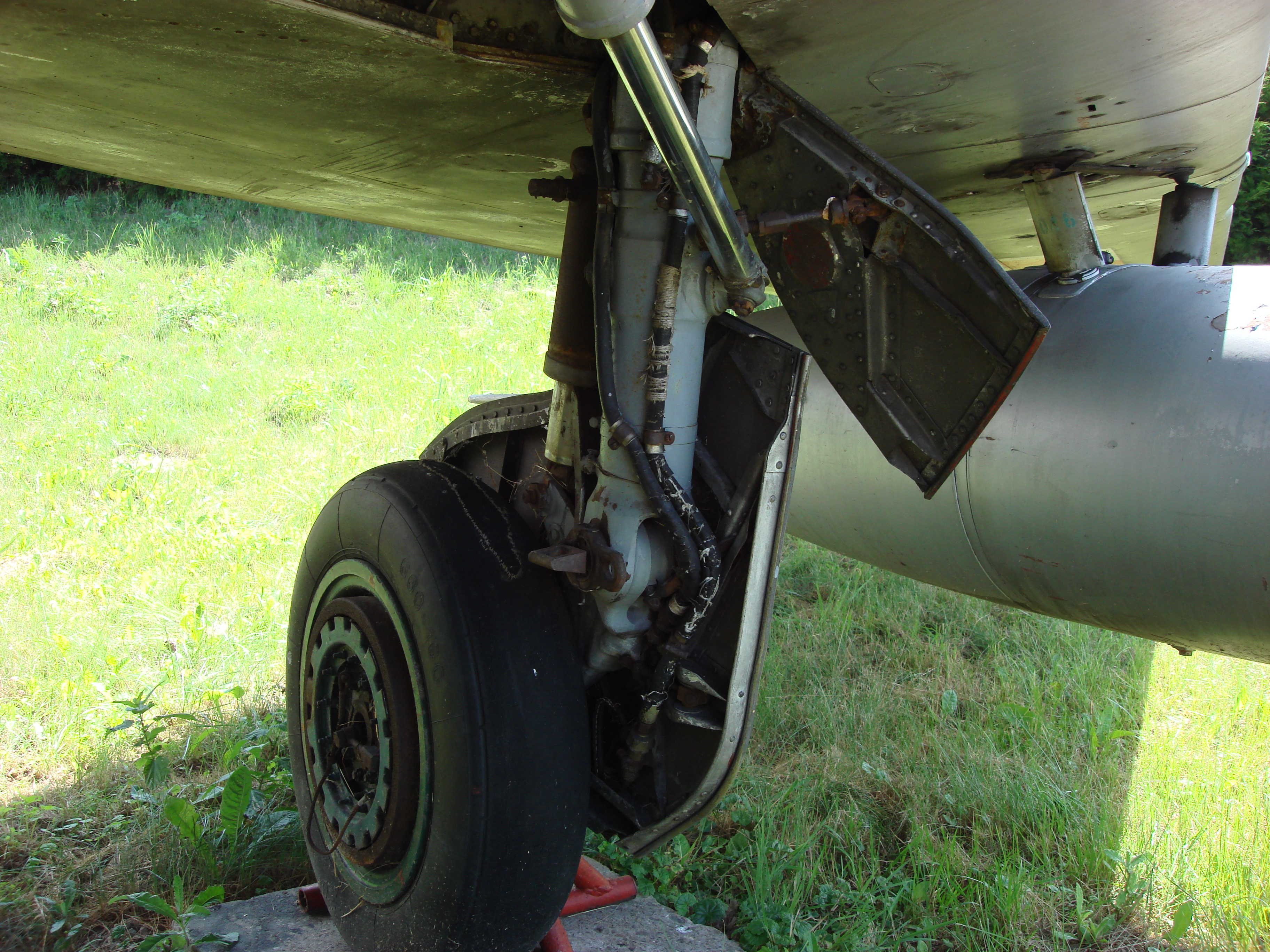Kraków 2009-03-16
Construction PZL Lim-2
117b Section 1954.09.17. WSK Mielec Lim-2.

PZL LIM-2 airplane is a one-way, single-engine front fighter, built in a classic layout. According to contemporary nomenclature, this is also a combat multi-purpose plane; It captures air targets, attacks ground objects, conducts recognition and serves to train. Middle-free. The half-component, metal structure, mainly used Duralumin D16-T, and in important places the steel of 30CHGSA.
Underflow patches 37 degrees on the edge of attack, Rozn Negative -2 degrees, the angle of sinking 1 degree. Profile at the symmetrical hull CAGI S-10S, with a relative thickness of 9%, at the end the CAGI SR-3-12 carrier profile, with a relative thickness of 12%. Single-beam support construction, with a rear auxiliary jack. Working cover with a thickness of 1 mm to 2 mm. At the end of the wing, a weight of 26 kg decreasing vibrations (antiflitter weight). On the upper surface, two pairs of aerodynamic steering wheels, with a height of 10 cm. Extension flaps, when leaving, email by 20 cm. Tilted 20 degrees to take 55 degrees. Square of 1.18 m square. Airlines with an area of 0.505 m square, are leaning + - 15 degrees. Plots and flaps have internal aerodynamic compensation. Extending the wing 4.85, convergence of 1.61. Each wing is fixed to the hull with three fittings. Under the left wing, near the hull, a leaning spotlight for landing was placed. LIM-1 (MiG-15) did not have this reflector. The antennas of RW-2 devices were mounted on the wings; Under the right, near the hull an antenna broadcasting, under the left, at the end identical receiving antenna.
A circular cross-sectional aircraft fuselage has a length of 8.08 m. The fuselage is divided into two main parts. Built from frames, longitudes and working coverings, bounded to frames and longitudes. A frontal grip with a diameter of 0.747 mm. On it there is a pane of the S-13 photocabin lens. The air channel splits and avoid the cabin on the sides. In the front of the hull there was batteries, oxygen cylinders, balancing masses and front chassis chamber. Pressure cabin, heated with air from the engine and air-conditioned. Glazing protrudes from the strap of the hull, divided into a solid windshield with armored glass, with a total thickness of 64 mm and hand-moved to the back of the steak. Armchair thrown with a powder load to a height of 11 m. The minimum secure height of the use of a chair is about 250 m above the ground. Armored cabin. Under the cab, the Shooting Compartment was placed, the radiovascular compartment and converter. The main fuel tank was placed behind the cab. The last part of the front of the hull is fixed the engine and the first frame of the back of the fuselage. In the back of the fuselage there are two transverse fuel tanks in the J-shaped cross-section (from the bottom of the motor outlet tube). Nozzle outlet diameter 0.56 m. In addition, in the back of the hull there was placed; Drives of steering, MRP-48 P receiver, with antenna, ark-5 antenna. A small mast of the SRU-0 or SRO-1 or SRO-1 lifting device has been placed on the ridge. Also behind the right side, a signal electrobridist, started by the pilot from the cabin, was placed. After the sides of the back of the hull, two aerodynamic brakes with a larger surface than in the LIM-1 version were placed. In the lower back of the hull there was a small bumper, protecting the fuselage before starting a runway.



Data T-T PZL Lim-2:
Spread 10.08 m. Length 10.10 m. Height 3.70 m. A carrier surface 20.60 m2. Own mass 3 681 kg. Mass with extra fuel tanks 3 720 kg. Total weight 5 044 kg. Maximum weight 6 045 kg. Cargo weight 1 363 kg. Maximum speed 1 076 km / h. Maximum speed MA-0.95. Climbing speed 46 m / s. Freight rate 860 km / h. Landing speed 190 km / h. Maximum range of 2,000 km. Range with a maximum load 1 330 - 1 861 km. Flight time 2 hours 57 minutes. Maximum ceiling 15,000 m.
Written by Karol Placha Hetman
